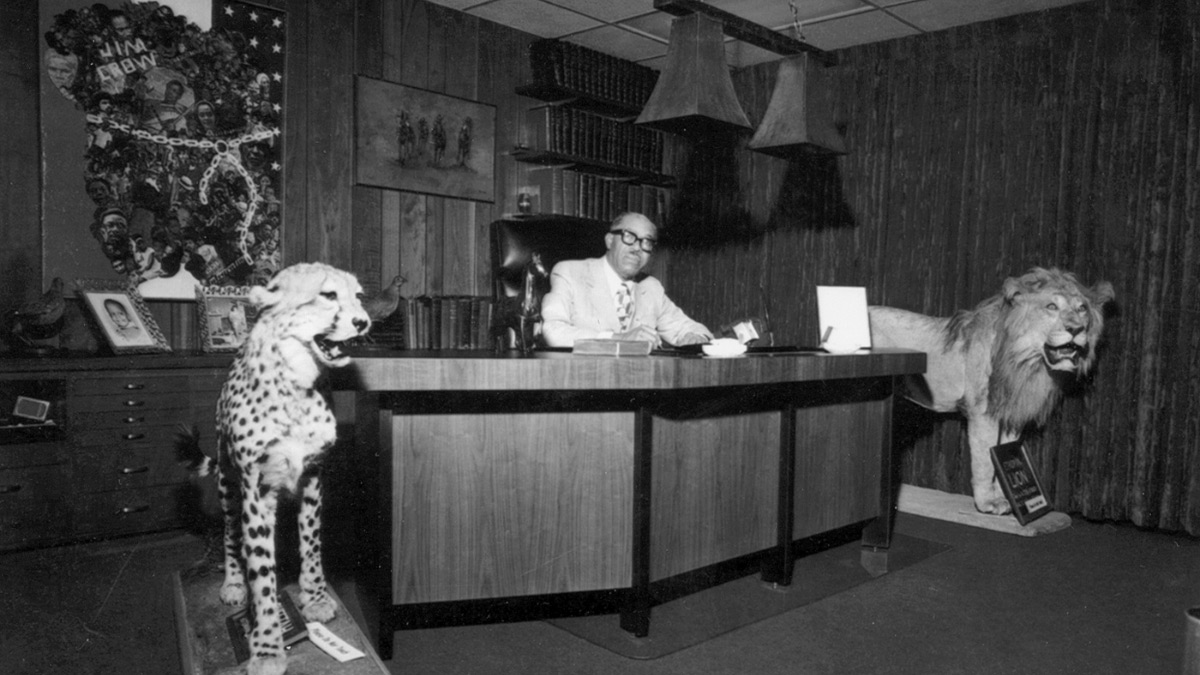When an assassin struck down Medgar Evers on June 12, 1963, the national outrage spurred on a civil rights movement that was already getting more attention. A month before Medgar’s demise Bull Connor’s police had turned fire hoses with full force on men, women, and children in Birmingham, Alabama. Just over two months after Medgar’s death a record crowd turned out for Martin Luther King Jr.’s “I Have a Dream Speech.”Within two years the momentum led to both the Civil Rights Act and Voting Rights Act. These events are well known, but few are aware of the instrumental role played by Medgar’s former employer and mentor, T.R.M. Howard, in making these events possible.
Born in poverty in 1908, Howard was already a black folk hero in Mississippi by the time Medgar met him. Howard had come to the all-black town of Mound Bayou, Mississippi, in 1942 to be chief surgeon of the Taborian Hospital that provided affordable health care, including major surgery, to the poor without any governmental aid. By the end of the decade he had a plantation of 1,000 acres, a home-construction firm, a restaurant, and a small zoo, and had built the first swimming pool for blacks in the state.
When Medgar Evers graduated from Alcorn College in 1952, like many young blacks of talent and ambition, he sought employment with Dr. Howard, who hired him as a salesman for the Magnolia Mutual Life Insurance Company. Medgar visited plantations in his insurance territory near Clarksdale to sell policies and collect premiums. With Dr. Howard’s full backing, he promoted civil rights on these visits. Howard also employed Medgar’s wife, Myrlie, as his typist and eventually delivered her first two children.
Myrlie Evers came closest to capturing the essence of who T.R.M. Howard was: “One look told you that he was a leader: kind, affluent, and intelligent, that rare Negro in Mississippi who had somehow beaten the system.”
Medgar eventually became an officer in Howard’s recently formed Regional Council of Negro Leadership, which promoted an agenda of self-help, mutual aid, thrift, business ownership, and voter registration. He was a central player in the Council’s successful boycott of service stations that refused to open their restrooms to blacks. The Council distributed more than 50,000 bumper stickers with the slogan “Don’t Buy Gas Where You Can’t Use the Restroom.” After the Supreme Court overturned segregation in 1954, Howard encouraged Medgar to apply to become the first black student at the University of Mississippi Law School, but the administrators found a pretext to turn him down. Medgar’s efforts so impressed the NAACP that it appointed him to its state board of directors. Over the next two years, Howard and Evers teamed up to find evidence in the Emmett Till murder case. Till was a fourteen-year-old black boy who was tortured and murdered by two white brothers in Mississippi for alleged “ugly talk” to one of their wives.
In 1963, seven years after Howard moved to Chicago, he returned to Mississippi to give the main eulogy at a memorial service for his former protege. He reminded the crowd how Evers had taken part in the Council’s successful boycott in 1952 more than three years before Rosa Parks refused to give up her bus seat. Howard apologetically related the story of a veteran of Bull Run who visited the graves of his comrades many years after the Civil War battle: “A young man challenged: ‘How could you have survived such a battle? Did you run?’ ‘Yes, it is true,’ the old man replied. ‘The only real veterans of this battle are the ones who are buried here.’”
Howard’s address also included a warning that patience was running thin. He asserted that he had “all the faith in the world in our non-violent movement,” but warned that “for one hundred years we have turned one cheek and the other and they’ve continued to hit us on both cheeks. The neck is getting tired now of turning from side to side.”










